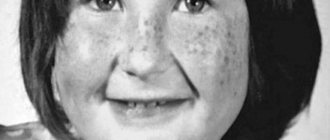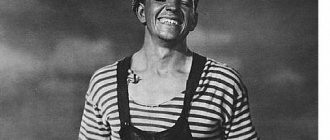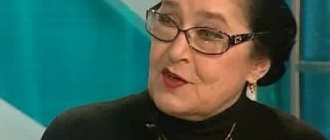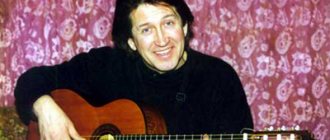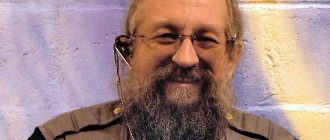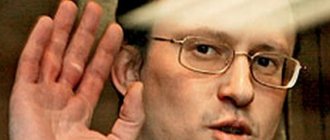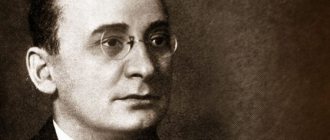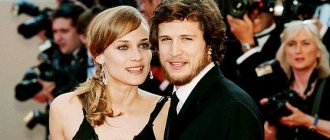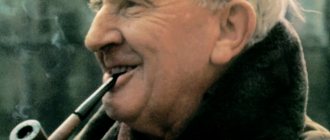The name of this writer is always pronounced with respect and admiration by fans of literature. Charles Dickens, whose books have educated more than one generation of readers, is one of the most important British classics. He became a real symbol of Victorian England. Why is Charles Dickens still popular? The answer to this question may be a list of his best books.
Photo: wikimedia.org
Dickens remained in the memory of his contemporaries and descendants as an author who fully revealed the life of his time (Britain of the 19th century). The writer became a model and a beacon for many writers of the following centuries. He masterfully ridiculed the vices of his contemporary society. He had great talent and efficiency.
Humor, irony, deep psychological development of characters, dashingly twisted plot lines - all this makes the best books of the writer a real treat for every literature lover.
So, here are the most rated works of the great Englishman:
"Posthumous Papers of the Pickwick Club" (1836–1837)
Photo: olden.rsl.ru
The first book of the English classic. The novel was published while Dickens was working as a journalist. Actually, it was thanks to the so-called second oldest profession that he was able to develop his writing talents and inclinations.
Until now, the number of fans of the novel can compete with the number of the most popular works in the history of world literature. It was with “Posthumous Notes” that Dickens’s fame began, immediately followed by the rise of his writing career.
The novel centers on the morals and customs of England at that time. A group of certain gentlemen organizes a club, headed by Mr. Pickwick. Their purpose is to observe human nature and the world around them. The book is a unique, truthful and grotesque portrait of English society.
The novel, as was customary then, was published in series. It's funny that its publication coincided with the accession to the throne of the same Queen Victoria, who gave the name to the historical period that is forever associated with Dickens and his creations.
"Dombey and Son" (1848)
Photo: ozon-st.cdn.ngenix.net
One of Dickens's saddest books. A deep psychological novel. It centers on the life and moral problems of the bourgeoisie of the early Victorian era. England is experiencing rapid economic growth. Capitalism is developing at an unprecedented pace. The concept of profit becomes the cornerstone of this time.
Mr Dombey is a respectable man. He always adheres to the rules accepted in society. But it is precisely this quality of character that leads to the collapse of him and his entire family.
For the time of the first steam locomotives and steamships, the accumulation of crazy capital, respectability and decency are not needed. Why is this happening? Dickens invites the reader to ponder the question of how it will help to observe what problems Mr. Dombey and son are forced to solve in their lives.
Major works
Novels
- "Posthumous Papers of the Pickwick Club", published in monthly editions, April 1836 - November 1837
- The Adventures of Oliver Twist, February 1837 - April 1839
- Nicholas Nickleby, April 1838 - October 1839
- The Old Curiosity Shop, weekly issues, April 1840 - February 1841
- Barnaby Rudge, February - November 1841
- The Christmas books: A Christmas Carol, 1843
- Bells, 1844
- Cricket behind the hearth, 1845
- The Battle of Life, 1846
- The Possessed, or The Deal with the Ghost, 1848
Collections of stories
- Sketches by Bose, 1836
- The Mudfog Papers, 1837
- Traveler not on commercial business, 1860-1869
"The Adventures of Oliver Twist" (1838)
Photo: ozon-st.cdn.ngenix.net
One of Dickens's most famous novels. For two centuries now, largely thanks to this book, the writer has been a leader among the world's classics. The adventures of young Oliver have been filmed several times. Poor orphan Twist has become one of the most recognizable characters in world literature.
The first novel in British belles lettres to feature a child as its hero. The Victorian era, which is primarily associated with the concept of “good old England,” was not so kind.
Child labor for 12–14 hours a day in factories was commonplace. The fate of orphans was unenviable: they ended up in a workhouse, where hard labor awaited them, or eked out a miserable existence, wandering through the city slums.
But the adventures of Oliver Twist not only evoke deep sympathy, but allow the reader to experience bright and kind emotions. Naturally, how the hero’s action-packed adventures end will be known to those who follow this difficult path with him to the end.
Biography
Childhood and youth
The house in Portsmouth where Charles Diekkens was born.
Currently a house museum Portrait of Dickens by the artist Francis Alexander, 1842 Charles Dickens was born on February 7, 1812 in the Portsmouth suburb of Landport (English) Russian. He was the second child of eight children of John Dickens (1785-1851) and Elizabeth Dickens, née Barrow (1789–1863). His father served as an official at a Royal Navy naval base; in January 1815 he was transferred to London; in April 1817 the family moved to Chatham. Here Charles attended the school of the Baptist minister William Gilles, even when the family moved again to London. Living beyond his means in the capital led his father to debtor's prison in 1824. His older sister continued to study at the Royal Academy of Music until 1827, and Charles worked in the Blacking Factory .
) Warren, where he received six shillings a week.
But on Sunday they too were in prison with their parents. A few months later, after the death of his paternal grandmother, John Dickens, thanks to the inheritance he received, was released from prison, received a pension from the Admiralty and a position as a parliamentary reporter in one of the newspapers. However, at the insistence of his mother, Charles was left at the factory, which influenced his attitude towards women in later life. After some time, he was assigned to Wellington House Academy
, where he studied until March 1827.
In May 1827 he was hired by Ellis and Blackmore as a junior clerk at 13 shillings a week. Here he worked until November 1828. Having studied shorthand according to the system of T. Garnier[en], he began to work as a free reporter, together with his distant relative, Thomas Charlton. In 1830, Charles was invited to the Morning Chronicle
. In the same year, Charles Dickens met his first love, Maria Beadnell, the daughter of a bank director, who became the prototype for Dora in the novel David Copperfield. Many years later, Maria turned to Dickens with a letter, but the meeting in 1855 disappointed the writer; this episode was reflected in the image of Flora, the faded and drunken bride of the protagonist in the novel Little Dorrit[9]. In 1836 he married the publisher's daughter, Catherine Hogarth. The writer was very attached to her sister Mary, whose early death shocked him. Catherine's other sister, Georgina Hogarth, lived with the Dickens couple and raised their children. In 1858, Dickens divorced Catherine; The reason for the divorce was his affair with actress Ellen Ternan, whom he later included in his will.
Literary activity
“My faith in the people who rule is, in general, insignificant.
My faith in the people they rule, in general, is boundless.” Dickens found himself primarily as a reporter. As soon as Dickens completed - on trial - several reporting assignments, he was immediately noticed by the reading public.
Literature was what was most important to him now.
Dickens's first morally descriptive essays, which he called "Sketches of Boz", were published in 1836. Their spirit was quite consistent with Dickens's social position. It was, to some extent, a fictional declaration of the interests of the bankrupt petty bourgeoisie. Psychological sketches and portraits of Londoners, like all Dickens's novels, were also first published in a newspaper version and have already brought the young author enough fame.
"Posthumous Papers of the Pickwick Club"
Main article: Posthumous Papers of the Pickwick Club
Dizzying success awaited Dickens in the same year with the publication of the chapters of his “Posthumous Papers of the Pickwick Club”.
In this novel, he paints old England from its most varied sides, admiring its good nature and the abundance of lively and sympathetic features inherent in the best representatives of the English petty bourgeoisie. All these traits are embodied in the good-natured optimist, the noblest old eccentric Mr. Pickwick. This novel by Dickens aroused an extraordinary surge of reader interest.
"The Life and Adventures of Oliver Twist" and other works of 1838-1843
Two years later, Dickens performed Oliver Twist and Nicholas Nickleby ( The Life and Adventures of Nicholas Nickleby
) 1838—1839.
"The Adventures of Oliver Twist" ( Oliver Twist; or,The Parish Boy's Progress
), (1838) - the story of an orphan born in a workhouse and living in the slums of London. The boy meets on his way baseness and nobility, criminals and respectable people. Cruel fate gives way to his sincere desire for an honest life.
The pages of the novel capture pictures of the life of English society of the 19th century in all their living splendor and ugliness. A broad social picture from the workhouses and criminal dens of London's bottom to the society of the rich and Dickensian-kind-hearted bourgeois do-gooders. In this novel, Charles Dickens acts as a humanist, affirming the power of good in man.
The novel caused a wide public response. After his release, a number of scandalous proceedings took place in the workhouses of London, which, in fact, were semi-prison institutions where child labor was mercilessly used.
Dickens's fame grew rapidly. Both liberals saw him as their ally, because they defended freedom, and conservatives, because they pointed out the cruelty of new social relationships.
After traveling to America, where the public greeted Dickens with no less enthusiasm than the British, Dickens wrote his “Martin Chuzzlewit” ( The Life and Adventures of Martin Chuzzlewit
, 1843). In addition to the unforgettable images of Pecksniff and Mrs. Gump, this novel is remarkable for its parody of Americans. The novel caused violent protests from the overseas public.
In 1843 A Christmas Carol
), followed by
The Chimes
, The Cricket on
the Hearth
, The Battle
of Life
, and
The Haunted Man
.
At the same time, Dickens became editor-in-chief of the Daily News. In this newspaper he had the opportunity to express his socio-political views.
"Dombey and Son"
One of his best novels is The Dombey and Son Trading House. Trade wholesale, retail and for export" ( Dealings with the Firm of Dombey and Son: Wholesale, Retail and for Exportation
, 1848). The endless string of figures and life positions in this work is amazing. There are few novels in world literature that, in terms of richness of color and variety of tone, can be placed on a par with Dombey and Son, not counting some of the later works of Dickens himself. He created both petty-bourgeois characters and representatives of the London poor with great love. All these people are almost entirely eccentrics, but the eccentricities that make you laugh make these characters even closer and sweeter. True, this friendly, this harmless laughter makes you not notice their narrowness, limitations, difficult conditions in which they have to live; but that’s Dickens... It should be noted, however, that when he turns his thunder and lightning against the oppressors, against the arrogant merchant Dombey, against scoundrels like his senior clerk Carker, he finds such striking words of indignation that they sometimes border on revolutionary pathos.
"David Copperfield"
Main article: David Copperfield (novel)
The humor is even more weakened in Dickens's next major work, David Copperfield ( The Personal History, Adventures, Experience and Observation of David Copperfield the Younger of Blunderstone Rookery (Which He Never Meant to Publish on Any Account)
), (1849—1850).
This novel is largely autobiographical. Its theme is serious and carefully thought out. The spirit of praising the old foundations of morality and family, the spirit of protest against the new capitalist England resounds loudly here too. Many connoisseurs of Dickens's work, including such literary authorities as L.N. Tolstoy, F.M. Dostoevsky, Charlotte Bronte, Henry James, Virginia Woolf, considered this novel his greatest work.
"The Life of David Copperfield as Told by Himself" (1849–1850)
Photo: rech-deti.ru
Another talented novel by the British classic, which was highly appreciated by many of his colleagues at the time of publication. The book tells the story of a young man growing up who has to endure great difficulties and hardships.
Perhaps the interest in such plots (remember the same “Oliver Twist”) is associated with a story that happened to Dickens in his youth. His father fell into debt, and the 15-year-old future writer was also forced to serve this sentence on weekends. The situation in Charles's family improved when an inheritance appeared, which made it possible to live like a human being.
The novel is clearly autobiographical. The fate of the main character David evokes sympathy from the first pages. His father died before the boy was born.
At first, the child was raised by his mother and nanny (caring and loving). But then a stepfather appears in David’s life - a domestic tyrant who sees him only as a burden. But this is not enough. The school principal, Mr. Creakle, who previously sold hops, is trying to become another mentor for the boy. He wants to drive his wretched ideas about the world order into David's head.
It would seem, what can be done, where can one go from such teachers and mentors? But then the good fairy appears. The stern-looking Betsy Trotwood, who truly becomes “a ray of light in a dark kingdom” for the main character.
Memory
Charles Dickens (1812-1870). To the 150th anniversary of his birth. Postage stamp of the USSR 1962
- A crater on Mercury is named after Dickens.
- A USSR postage stamp was issued for the 150th anniversary of the writer's birth (1962).
- Dickens' portrait was featured on the English 10 pound note issued 1993-2000.
- To mark the 200th anniversary of Dickens's birth, the UK's Royal Mint is issuing a commemorative £2 coin featuring Dickens's portrait of his works, from Oliver Twist to David Copperfield to Great Expectations.
- In London there is a house-museum of Charles Dickens “Charles Dickens Museum”.
- There are monuments in the USA, Russia and Australia.
- Despite the fact that in his will the writer asked not to erect monuments to him, in 2012 it was decided to erect a monument in the main square of Portsmouth. The monument will be unveiled on June 9, 2013, by Martin Jeggins.
"The Mystery of Edwin Drood" (1870)
Photo: scontent-atl3-1.cdninstagram.com
The last and most mysterious novel by Charles Dickens. The author never had time to finish this work. Who killed Edwin Drood? This question haunts critics and readers. Dozens of versions of the events occurring in the book have been put forward. But a definitive answer cannot be found.
Six months after the murder, a mysterious stranger appears in the city. What does he have to do with this matter? Some believe that the hero after whom the book is named was not killed at all.
The latest masterpiece from Dickens is a Gothic detective story in which, as always, the master skillfully places psychological accents and twists the spring of intrigue to the limit.
In 1980, a mini-series was released, which featured some of the best actors of the time. At the end of the teleplay, all the main versions of Drood's fate were considered. Which of them is the most correct - the authors left it up to the audience to decide.
Personal life
In the 1850s, Dickens reached the zenith of his fame. He was the darling of fate - a famous writer, a master of thoughts and a wealthy man - in a word, a person for whom fate did not skimp on gifts.
Chesterton's portrait of Dickens at that time was quite successfully drawn:
Dickens was of average height. His natural liveliness and unpretentious appearance were the reason that he gave those around him the impression of a man of short stature or, in any case, of a very miniature build. In his youth, he had a cap of brown hair that was too extravagant, even for that era, and later he wore a dark mustache and a thick, fluffy, dark goatee of such an original shape that it made him look like a foreigner.
The former transparent pallor of his face, the sparkle and expressiveness of his eyes remained; “I’ll also note the actor’s moving mouth and his extravagant manner of dressing.” Chesterton writes about this:
He wore a velvet jacket, some incredible vests, their color reminiscent of completely implausible sunsets, white hats unprecedented at that time, a completely unusual, eye-catching whiteness. He willingly dressed up in stunning robes; they even say that he posed for a portrait in such attire.
Behind this appearance, in which there was so much posing and nervousness, lay a great tragedy.
The needs of Dickens' family members exceeded his income. His disorderly, purely bohemian nature did not allow him to bring any kind of order into his affairs. Not only did he overwork his rich and fertile brain by over-working his creative mind, but, being an extraordinarily brilliant reader, he endeavored to earn handsome fees by lecturing and reading excerpts from his novels. The impression from this purely acting reading was always colossal. Apparently, Dickens was one of the greatest reading virtuosos. But on his trips he fell into the hands of some dubious entrepreneurs and, while earning money, at the same time brought himself to exhaustion.
On 2 April 1836, Charles married Catherine Thomson Hogarth (19 May 1815 – 22 November 1879), the eldest daughter of his friend, the journalist George Hogarth. Catherine was a faithful wife and bore him 10 children: 7 sons - Charles Culliford Boz Dickens Jr. (January 6, 1837 - July 20, 1896), Walter Savage Landor (February 8, 1841 - December 31, 1863), Francis Jeffrey (January 15, 1844 - 11 June 1886), Alfred D'Orsay Tennyson (28 October 1845 - 2 January 1912), Sidney Smith Galdimand (18 April 1847 - 2 May 1872), Henry Fielding (16 January 1849 - 21 December 1933) and Edward Bulwer-Lytton (13 March 1852 - January 23, 1902), - three daughters - Mary (March 6, 1838 - July 23, 1896), Catherine Elizabeth Macready (October 29, 1839 - May 9, 1929) and Dora Annie (August 16, 1850 - April 14, 1851). But Dickens's family life was not entirely successful. Disagreements with his wife, some complex and dark relationships with her family, fear for sick children made Dickens’s family a source of constant worries and torment. In 1857, Charles met 18-year-old actress Ellen Ternan and immediately fell in love. He rented an apartment for her and visited his love for many years. Their romance lasted until the writer's death. She never went on stage again. The feature film “The Invisible Woman” (UK, 2013, directed by Ralph Fiennes) is dedicated to this close relationship.
But all this is not as important as the melancholy thought that overwhelmed Dickens that, essentially, what is most serious in his works - his teachings, his appeals to the conscience of those in power - remains in vain, that, in reality, there is no hope for improving that the terrible situation created in the country, from which he saw no way out, even looking at life through humorous glasses that softened the sharp contours of reality in the eyes of the author and his readers. He writes at this time:
Every hour the old conviction grows stronger in me that our political aristocracy, together with our parasitic elements, are killing England. I don't see the slightest glimmer of hope. As for the people, they have so sharply turned away from both parliament and the government, and are showing such deep indifference towards both that this order of things begins to inspire me with the most serious and alarming fears. Noble prejudices, on the one hand, and the habit of subordination, on the other, completely paralyze the will of the people. Everything collapsed after the great 17th century. There is nothing more to hope for.
Personal oddities
Dickens often spontaneously fell into a trance, was subject to visions and from time to time experienced states of déjà vu. When this happened, the writer nervously fiddled with the hat in his hands, which is why the headdress quickly lost its presentable appearance and became unusable. For this reason, Dickens eventually stopped wearing hats [ source not specified 1371 days
].
Another oddity of the writer was told by George Henry Lewis, editor-in-chief of the Fortnightly Review magazine (and close friend of the writer George Eliot). Dickens once told him that every word, before going on paper, is first clearly heard by him, and his characters are constantly nearby and communicate with him.
While working on “The Antiquities Shop,” the writer could not eat or sleep peacefully: little Nell was constantly hovering under his feet, demanding attention, crying out for sympathy and being jealous when the author was distracted from her by talking with someone from outside.
While working on the novel Martin Chuzzlewit, Dickens was tired of Mrs. Gump with her jokes: he had to fight her off with force. “Dickens warned Mrs. Gump more than once: if she did not learn to behave decently and did not appear only when called, he would not give her another line at all!” Lewis wrote. That is why the writer loved to wander through crowded streets. “During the day you can somehow manage without people,” Dickens admitted in one of his letters, “but in the evening I simply cannot free myself from my ghosts until I get lost in the crowd.”
“Perhaps it is only the creative nature of these hallucinatory adventures that keeps us from mentioning schizophrenia as a possible diagnosis,” notes parapsychologist Nandor Fodor, author of the essay “The Unknown Dickens” (1964, New York).
Later works
Dickens' social novel Hard Times (1854) is also permeated with melancholy and hopelessness. This novel was a tangible literary and artistic blow dealt to 19th-century capitalism with its idea of unstoppable industrial progress. In his own way, the grandiose and terrible figure of Bounderby is written with genuine hatred. But Dickens does not spare the leader of the strike movement in the novel, the Chartist Slackbridge, who is ready to make any sacrifice to achieve his goals. In this work, the author for the first time questioned the value of personal success in society, undeniable in the past for him.
The end of Dickens's literary activity was marked by a number of other significant works. For the novel Little Dorrit
, 1855-1857) was followed by Dickens's historical novel
A Tale of Two Cities
(1859), dedicated to the French Revolution.
Recognizing the necessity of revolutionary violence, Dickens turns away from it as if it were madness. This was quite in the spirit of his worldview, and, nevertheless, he managed to create an immortal book in his own way. Dickens photographed by Jeremiah Gurney during a trip to New York in 1867-1868.
Great Expectations date back to the same time.
) (1861) - a novel with biographical features. His hero - Pip - rushes between the desire to preserve the petty bourgeois comfort, to remain faithful to his middle peasant position and the upward desire for splendor, luxury and wealth. Dickens put a lot of his own tossing, his own melancholy into this novel. According to the original plan, the novel was supposed to end in tears for the main character, although Dickens always avoided catastrophic endings in his works and, out of his own good nature, tried not to upset particularly impressionable readers. For the same reasons, he did not dare to lead the hero’s “great hopes” to their complete collapse. But the whole concept of the novel suggests the regularity of such an outcome.
Dickens reaches new artistic heights in his swan song - in a large multi-faceted canvas, the novel Our Mutual Friend (English: Our Mutual Friend, 1864). In this work, Dickens's desire to take a break from intense social topics is discernible. Fascinatingly conceived, filled with the most unexpected types, sparkling with wit - from irony to touching, gentle humor - this novel, according to the author's plan, was probably supposed to turn out to be light, sweet, and funny. His tragic characters are drawn as if in halftones and are largely present in the background, and the negative characters turn out to be either ordinary people who have put on a villainous mask, or such petty and funny personalities that we are ready to forgive them for their treachery; and sometimes such unhappy people that they can arouse in us, instead of indignation, only a feeling of bitter pity. In this novel, Dickens is noticeably turning to a new style of writing: instead of ironic verbosity, parodying the literary style of the Victorian era, there is a laconic style reminiscent of cursive writing. The novel conveys the idea of the poisonous effect of money - its symbol is the garbage heap - on social relations and the meaninglessness of the vain aspirations of members of society.
In this last completed work, Dickens demonstrated all the powers of his humor, shielding the wonderful, cheerful, pretty images of this idyll from the gloomy thoughts that took possession of him.
Apparently, dark thoughts were to find a way out again in Dickens's detective novel The Mystery of Edwin Drood
).
From the very beginning of the novel, a change in Dickens's creative style is visible - his desire to amaze the reader with a fascinating plot, to immerse him in an atmosphere of mystery and uncertainty. Whether he would have succeeded in this fully remains unclear, since the work remained unfinished.
On June 9, 1870, fifty-eight-year-old Dickens, exhausted by colossal work, a rather chaotic life and many troubles, died of a stroke in his home Gadshill Place (English) Russian, located in the village of Higham (Kent) (English) Russian ..
After death
Dickens's fame continued to grow after his death. He was turned into a real idol of English literature. His name began to be mentioned next to the name of Shakespeare, his popularity in England in the 1880-1890s. eclipsed Byron's fame. But critics and readers tried not to notice his angry protests, his peculiar martyrdom, his tossing and turning among the contradictions of life.
They did not understand and did not want to understand that humor was often for Dickens a shield from the excessively wounding blows of life. On the contrary, Dickens primarily gained fame as a cheerful writer of merry old England.
"Christmas Stories" (1843–1848)
Photo: 2.bp.blogspot.com
Dickens could write not only in a realistic style. This book became the standard thing in which he reveals all the power and depth of his imagination. A collection of Christmas stories that the public always likes.
The main characters here are not rich or poor, but magical creatures - elves and fairies, ghosts. The fairy tale is closely intertwined with reality, as befits a true story of Christmas miracles. It was thanks to the collection of stories that the world learned about Scrooge - a gloomy and old miser, to whom the spirits of the Past, Present and Future appear.
In modern pop culture, the name of one of the main characters of this book (the story “A Christmas Carol”) by Dickens is associated primarily with the character of Disney stories (Scrooge McDuck).
The Hollywood adaptation of an old story in a new way with Bill Murray (1988) also came out funny, colorful and moralizing, however, as another interpretation of the classic plot from director Robert Zemeckis (the Back to the Future trilogy) starring Jim Carrey (2009 ).
Film adaptations
- Scrooge, or Marley's Ghost, directed by Walter Boof. USA, Great Britain, 1901
- A Christmas Carol, directed by Searle Dawley. USA, 1910
- Great Expectations, directed by Robert Vignola. USA, 1917
- Great Expectations, directed by David Lean. Great Britain, 1946
- Scrooge, directed by Brian Desmond Hurst. Great Britain, 1951
- Scrooge, directed by Ronald Neame. UK, 1970
- The Mystery of Edwin Drood, directed by Alexander Orlov. USSR, 1980
- Martin Chuzzlewit, directed by David Lodge. UK, 1994
- Great Expectations, directed by Alfonso Cuaron. USA, 1998
- David Copperfield, directed by Simon Curtis. Great Britain, USA, 1999. The role of young Copperfield is played by Daniel Radcliffe
- The Cricket Behind the Hearth, directed by Leonid Nechaev. Russia, 2001
- David Copperfield, directed by Peter Medak. USA, Ireland, 2000
- Nicholas Nickleby, directed by Douglas McGrath. UK, USA 2002.
- Oliver Twist, directed by Roman Polanski. Czech Republic, France, Great Britain, Italy, 2005
- Bleak House (TV series), directed by Justin Chadwick, Suzanne White. UK, 2005
- Little Dorrit, directed by Adam Smith, Darbhla Walsh, Diarmuid Lawrence. UK, 2008
- A Christmas Carol, directed by Robert Zemeckis. USA, 2009
- David Copperfield, directed by Ambrogio Lo Giudice. Italy, 2009
- In 2007, French director Laurent Jaoui directed the film Dombais et fils, based on the novel Dombey and Son, starring Christophe Malavois, Deborah Francois and Denn Martinet.
"Great Expectations" (1860)
Photo: interesnyeknigi.ru
This Dickens novel has also become largely famous due to numerous film adaptations and theatrical productions. The central figure of the book is Pip (Fili Pirrip). The young man strives to portray himself as a real gentleman, eager to gain recognition in society.
However, life turns out to be very harsh to Pip's dreams. On his way, he experiences real disappointment in all his illusions. Money with a trail of blood trailing behind it will not bring good luck. The society that Pirrip so wanted to get into will show cruelty and hostility towards the main character in its entirety.
How often our high hopes are dashed because we do not understand the true happiness and purpose of our lives! But who is immune from this?
Later works[edit]
Dickens’s magnificent novel “Hard Times” is also imbued with this melancholy. This novel is the strongest literary and artistic blow to capitalism that was dealt to it in those days, and one of the strongest that was dealt to it in general. In his own way, the grandiose and terrible figure of Bounderby is written with genuine hatred. But Dickens hastens to dissociate himself from the advanced workers.
The end of Dickens's literary career was marked by a number of other excellent works. The novel Little Dorrit (1855-1857) gives way to the famous A Tale of Two Cities (1859), Dickens's historical novel dedicated to the French Revolution.
Of course, Dickens was no better able to understand the true essence of the French Revolution than Carlyle. Of course, he recoiled from her as if from madness. This was quite in the spirit of his entire worldview, and, nevertheless, he managed to create an immortal book in his own way.
“Great Expectations” (1860), an autobiographical novel, dates back to the same time. His hero - Pip - rushes between the desire to preserve the petty bourgeois comfort, to remain faithful to his middle peasant position and the upward desire for splendor, luxury and wealth. Dickens put a lot of his own tossing, his own melancholy into this novel. According to the original plan, the novel was supposed to end in tears, while Dickens always avoided difficult endings for his works, both out of his own good nature and knowing the tastes of his audience. For the same reasons, he did not dare to end “Great Expectations” with their complete collapse. But the whole plan of the novel clearly leads to such an end.
Dickens rises to the heights of his creativity again in his swan song - in the large canvas “Our Mutual Friend” (1864). But this work was written as if with a desire to take a break from tense social topics. Superbly conceived, filled with the most unexpected types, sparkling with wit - from irony to touching humor - this novel should, according to the author's plan, be affectionate, sweet, and funny. His tragic characters are brought out as if only for variety and largely in the background. Everything ends well. The villains themselves turn out to be either wearing a villainous mask, or so petty and ridiculous that we are ready to forgive them for their treachery, or so unhappy that they arouse acute pity instead of anger.
In this last work, Dickens gathered all the strength of his humor, shielding the wonderful, cheerful, pretty images of this idyll from the melancholy that had taken possession of him. Apparently, however, this melancholy was to flood us again in Dickens' detective novel The Mystery of Edwin Drood. This novel was begun with great skill, but where it was supposed to lead and what its intention was, we do not know, for the work remained unfinished. On June 9, 1870, fifty-eight-year-old Dickens, not old in years, but exhausted by colossal work, a rather chaotic life and a lot of all sorts of troubles, dies in Gadeshill from a stroke.
"Hard Times" (1854)
Photo: Ozon.ru
The title of the novel speaks for itself. The action takes place in the city of Coketown. This is an industrial center, subject to the logic of a new (for Dickens's time) industrial (factory) civilization.
Everything in this city looks faceless. People wearing the same clothes who go out and return home at the same time every day.
In Coketown, facts and figures rule. It is their philosophy that Boundbury, a rich and influential banker, follows. The soulless atmosphere in the city is complemented by the Gradgrain school, in which there is no place for love, warmth and imagination. A traveling circus team undertakes to confront such a boring, faded and gray world.
"Bleak House" (1853)
Photo: s3-goods.ozstatic.by
Dickens wrote the book when he turned 40. This is the Englishman's ninth novel. Critics believe that it is with this piece that the period of the master’s creative maturity begins.
The novel is a kind of encyclopedia of Victorian England. Among her heroes there are aristocrats and slum dwellers.
In the book, Dickens once again demonstrates his ability to create and twist plot intrigue. The novel contains many mysteries and secrets that the reader has to solve together with the main characters.

